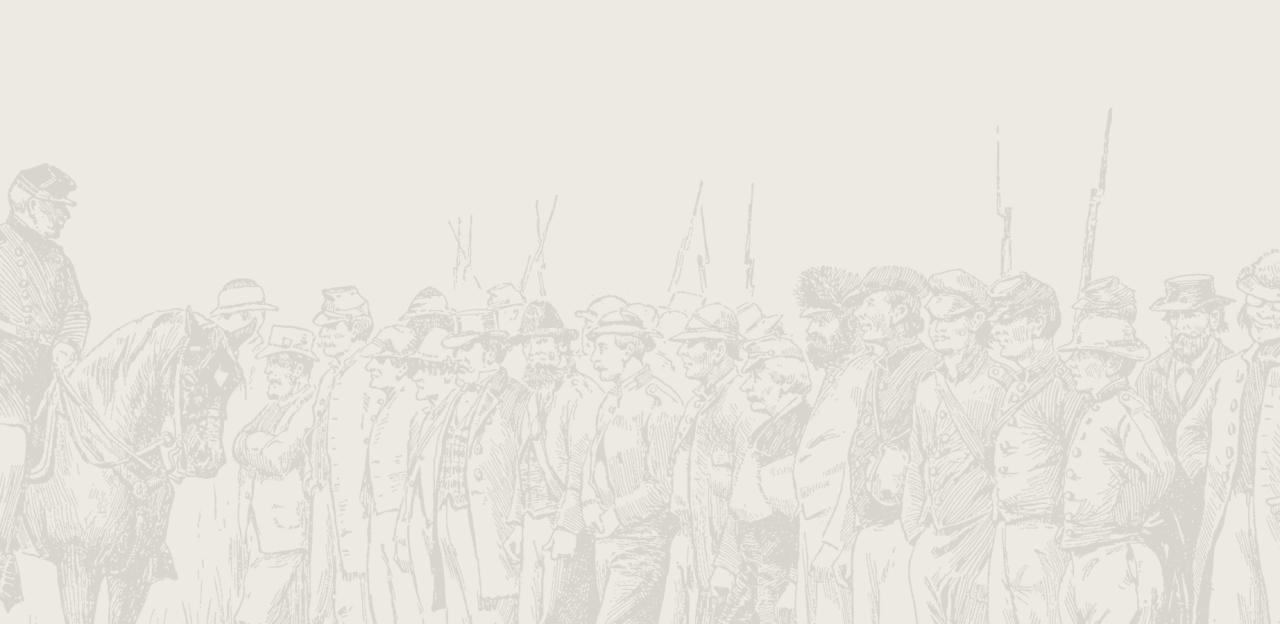Gettysburg

The Battle of Gettysburg
After his astounding victory at the Battle of Chancellorsville in early May 1863, Robert E. Lee led his Army of Northern Virginia in its second invasion of the North. With his 75,000-man army in high spirits, Lee intended to collect food and supplies from the unspoiled Pennsylvania farm country and take the fighting away from war-ravaged Virginia. After a year of defensive victories in Virginia, Lee’s objective was to win a victory north of the Mason-Dixon line in the hopes of forcing a negotiated end to the fighting. Lee began moving north on June 3.
Prodded by President Abraham Lincoln, Maj. Gen. Joseph Hooker moved his 90,000-man Union Army of the Potomac in pursuit, but Hooker was relieved of command in late June. His successor, Maj. Gen. George Gordon Meade, continued the army’s movement northward, following orders to keep his army between Lee and Washington, D.C. Fully aware of Lee’s offensive abilities, Meade planned a defensive fight if necessary to defend the routes to the nation’s capital but he pursued Lee closely.
Advance elements of Lee’s army crossed the Potomac on June 15 and reached the Susquehanna River by June 28. That same day, Lee, temporarily deprived of the reconnaissance provided by Jeb Stuart’s raiding cavalry, learned that Meade and his army were close behind. Taking advantage of the local road network, Lee ordered his army to concentrate around Gettysburg. Elements of the two armies collided west and north of the town the morning of July 1, 1863. Union cavalry under Brig. Gen. John Buford slowed the Confederate advance until the infantry of the Union I and XI Corps under Maj. Gen. John F. Reynolds could arrive. Reynolds was killed, and Confederate reinforcements under generals A.P. Hill and Richard Ewell soon reached the scene. By late afternoon, 30,000 Confederates ultimately overwhelmed 20,000 Yankees, who fell back through Gettysburg and fortified Cemetery Hill south of town.
On the second day of battle, the Union defended a fishhook-shaped range of hills and ridges south of Gettysburg with soldiers from the remaining five infantry corps. The Confederates wrapped around the Union position in a longer line. On the afternoon of July 2, Lee launched a heavy assault commanded by Lieut. Gen. James Longstreet on the Union left flank. Fierce fighting raged at Devil's Den, Little Round Top, the Wheatfield, the Peach Orchard and Cemetery Ridge as Longstreet’s men closed in on the Union position. Using their shorter interior lines, Union II Corps commander Maj. Gen. Winfield S. Hancock and others moved reinforcements quickly to where they were needed to blunt Confederate advances. On the Federal right, Confederate demonstrations escalated into full-scale assaults on East Cemetery Hill and Culp’s Hill. Although the Confederates gained ground on both ends of their line, the Union defenders still held strong positions as darkness fell on the battlefield.
Early on July 3, heavy fighting resumed on Culp's Hill as Union troops sought to recapture ground lost the previous day. Maintaining the initiative and believing his enemy to be weakened, Lee sought to capitalize on the previous day’s gains with renewed attacks on the Union line. Cavalry battles raged to the east and south, but the main event was a dramatic infantry assault by 12,500 Confederates commanded by Longstreet against the center of the Union position on Cemetery Ridge. The Virginia infantry division of George E. Pickett that had arrived the previous evening constituted about half of the attacking force. The charge would forever carry Pickett’s name and was briefly successful, but was ultimately repulsed by close-range Union rifle and artillery fire at great losses to the Confederates. Unable to continue the on offensive, Lee withdrew late on the afternoon of July 4 and led his army on a torturous retreat to Virginia.
As many as 51,000 soldiers from both armies were killed, wounded, captured or missing in the three-day battle; the bloodiest single battle of the war. Four months later, President Lincoln used the dedication ceremony at the Gettysburg's Soldiers National Cemetery to honor the fallen Union soldiers and to redefine the purpose of the war in his historic Gettysburg Address.


